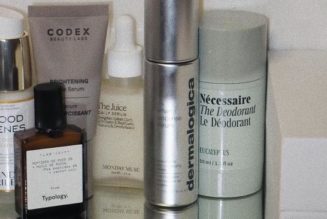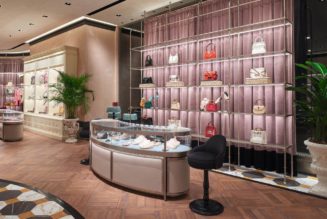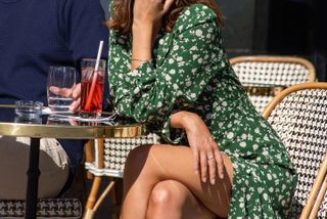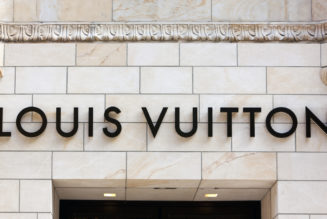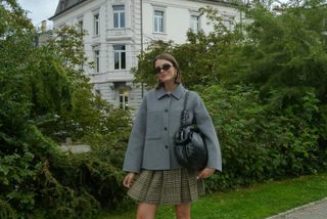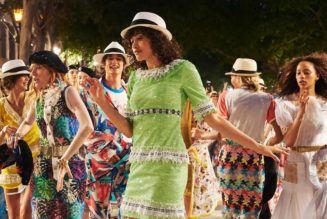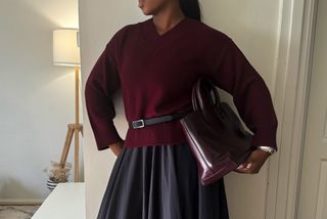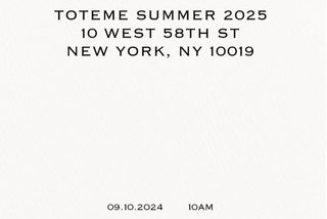
In October 2023, global luxury titan Kering – the group behind Gucci, Saint Laurent, Balenciaga and Alexander McQueen, among others – closed its acquisition of luxury fragrance house Creed; a deal considered significant in both fashion and beauty because of its scale and the price-tag attached. And transactions like this follow on from other major acquisitions and mergers in the space, such as Spanish fashion major Puig’s majority stake acquisition in British beauty brand Charlotte Tilbury back in 2020 and The Estée Lauder Companies’ purchase of Tom Ford in April of this year. In September 2023, Richemont announced the creation of a perfume and beauty division.
But why had fashion-beauty mergers ramped up? And could fashion truly succeed in expanding into such a dynamic and competitive global beauty market? Financial and market experts weighed in at Beauty Independent’s recent Dealmaker Summit EU/UK 2023 in London, UK last month.
Sandra Nait-Amer, managing director at independent financial services group Rothschild & Co, said it had certainly been interesting to watch how business ideas had evolved in recent years.
’Big business to be made within beauty’
In luxury fashion, Nait-Amer told attendees there had been a “complete shift of strategy” recently, spurred by “the realisation that there is a big business to be made within beauty”.
What beauty offered fashion, she said, was cashflow with better visibility, free from cycles typical in fashion, along with access to a dynamic and sizeable global market. Via beauty, high-end fashion brands could capture a wider audience in the “aspirational luxury consumer”, she said.
“…When you look at brands like Chanel or Dior, 40% of the brand sales are from fragrance and beauty. When you’re the owner of Gucci, it makes a lot of sense to leverage the value of the brand you’ve created in this new vertical that is also growing in a more robust way,” she emphasized.
Luxury fashion brands also took “a lot of time to build”, she said, so when considering growth, it made sense to create a beauty offering within the brand versus acquiring and scaling another fashion house.
And this potential for luxury fashion brands to succeed in beauty had already been “well proven”, Nait-Amer said.
Armani, for example, had a strong track record in makeup and Chanel was big across all beauty categories. “In the past, [fashion brands] would only see the beauty potential in launching their fragrance under the same name, but now you can really build a whole beauty business that’s worth billions, beyond just fragrance. The size of the prize is much bigger than people thought initially.”
Reserved for the bigger fashion brands
However, the finance expert said stretching into beauty only made sense for scaled and matured fashion brands – the “mega luxury brands” – because for younger, growing fashion businesses it made more sense to focus on the core business. Entering into beauty also required “a lot of investment” often only available after scaling, particularly for talent-building in-house, she said. On top of this, high levels of investment also made more sense for companies with multiple fashion brands in their portfolio versus mono-brand fashion firms, she said.
Angela Chou, investor at UK-based venture capital firm Felix Capital, agreed, stating it was “a lot” for founders to take on a second sector in early stages. “Most of the more important conversations are about geographies, new product categories and going into wholesale,” Chou said.
Obviously, there were exceptions, she said, with some fashion founders entering beauty early, but in these cases, they more likely moved into fragrance; crossing “that blurry line” between beauty and fashion.
Nait-Amer added that, for the time being, fashion majors were not interested in acquiring parts of the beauty supply chain but instead focused on on-boarding and picking up brands. “I don’t think any of these fashion groups want to build a vertically-integrated supply chain in beauty. The attraction of the beauty sector is that the ecosystem is very strong, the outsourcing is very strong, so you don’t need to internalise these capabilities. Across the supply chain, you have lots of experts that do these products very well and it would be very difficult to replicate that level of innovation and agility because the pace is much faster in beauty than fashion.”
Beyond fragrances, but where?
Asked what beauty categories offered most promise for fashion majors, Nait-Amer said there were only a handful that made sense.
Fragrance and colour cosmetics, for example, were two examples of “well trodden path[s]” that aligned well with the creative aspect of fashion, she said. Skin care on the other hand was far tougher to enter as a fashion brand because consumers shopping this space tended to look for science, efficacy and credibility versus brand power, she said. For fashion to succeed in skin care, she said acquisitions of verticals made more sense than building in-house capabilities.
Nader Naeymi-Rad, founder and publisher of Beauty Independent, said one potential game-changing area where fashion could expand successfully into beauty was in wellness and athleisure.
“Athleisure is to fashion what wellness is to beauty. I may not buy a skin care product from Chanel, but an SPF product from Patagonia or supplements from North Face makes sense. So, I think wellness and athleisure is one area you may be able to get that fusion, where they’re both off-centre: they’re not core typical beauty, nor core typical fashion and you may be able to create something exciting in both worlds and remain authentic,” Naeymi-Rad said.

